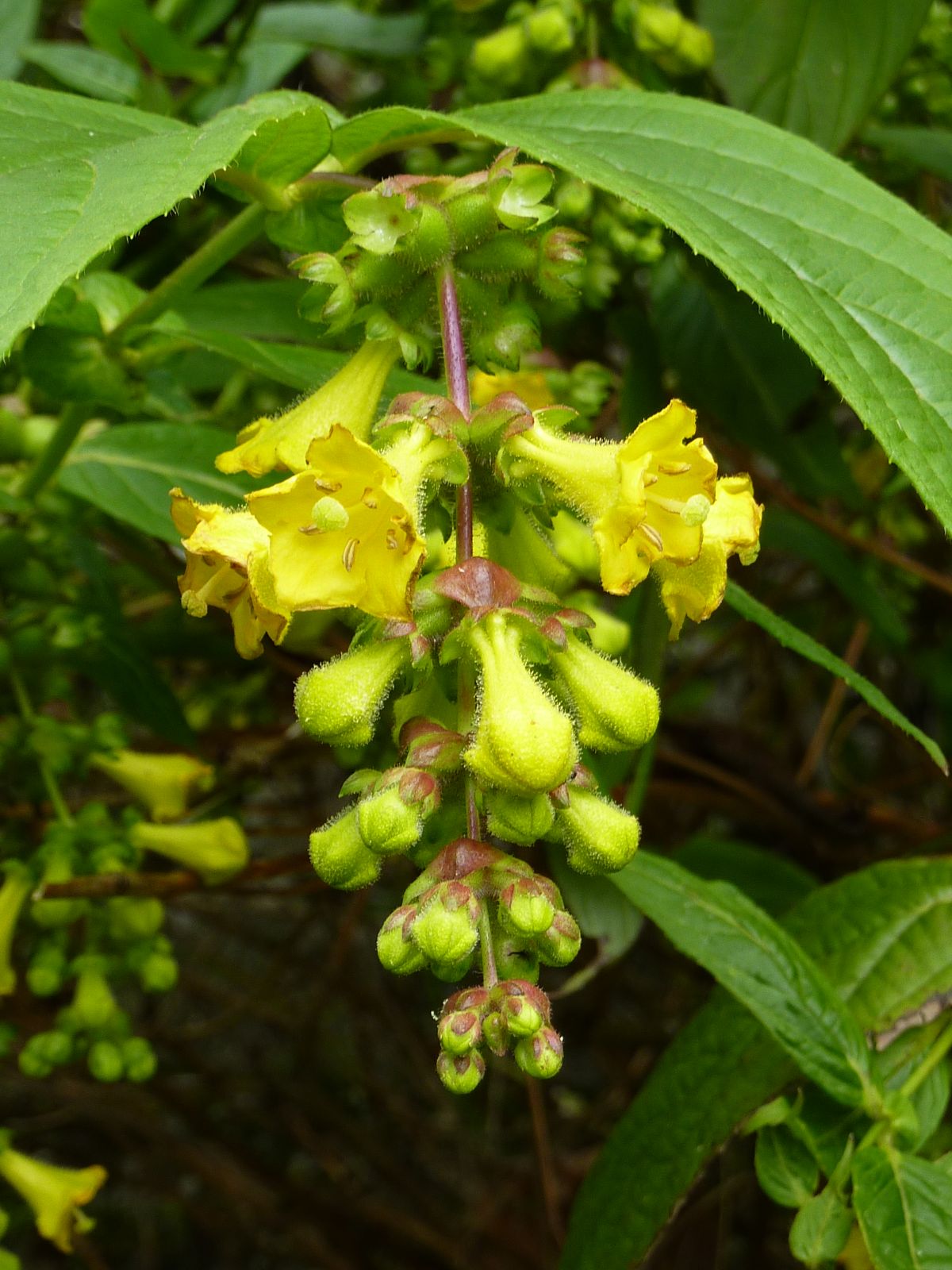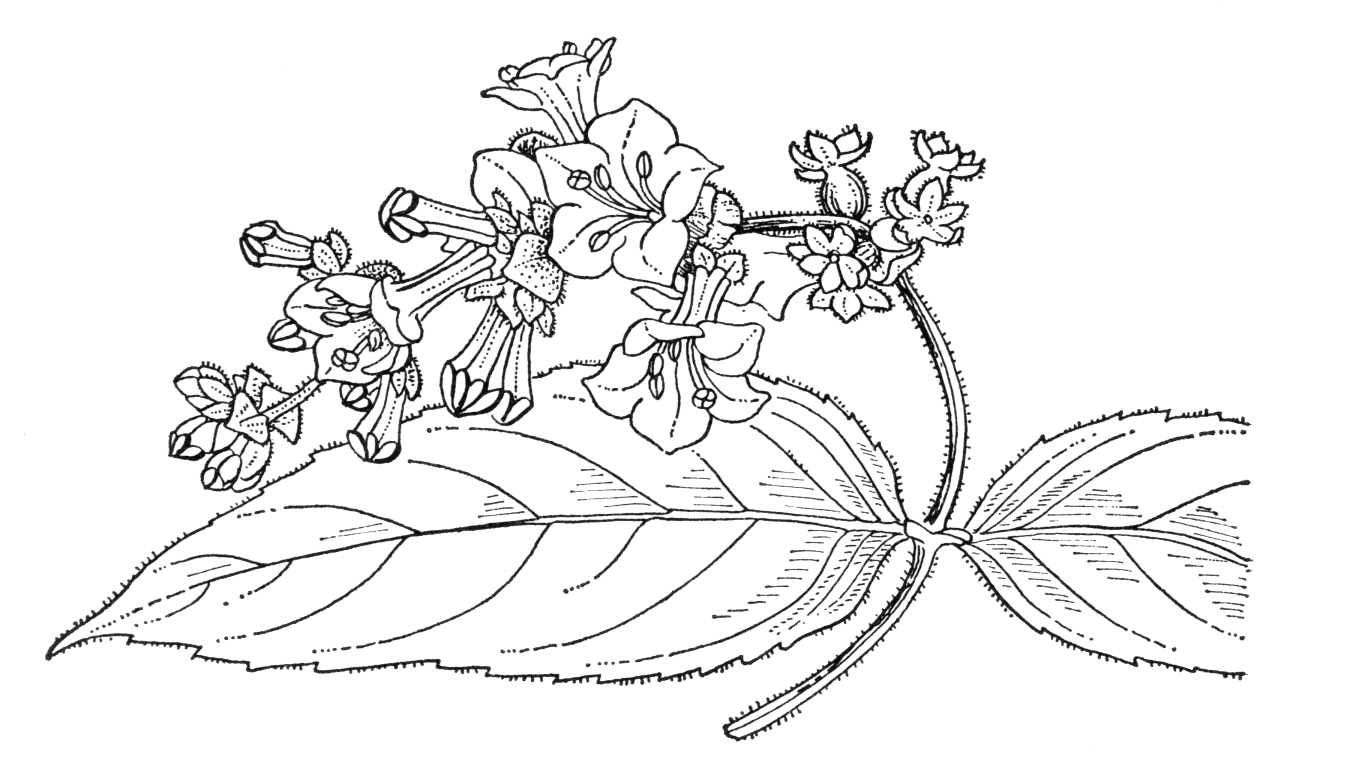Leycesteria crocothyrsos
Sponsor
Kindly sponsored by
The Normanby Charitable Trust
Credits
Owen Johnson (2021)
Recommended citation
Johnson, O. (2021), 'Leycesteria crocothyrsos' from the website Trees and Shrubs Online (treesandshrubsonline.
Genus
Common Names
- Golden Pheasant-Eye
- Yellow Pheasantberry
A shrub to 2.5 m, producing long, slender, hollow young shoots with sparse glandular hairs. Each joint of the stem is furnished with a pair of conspicuously large, kidney-shaped, interpetiolar stipules 6–18 mm wide, each stipule being adnate for a short distance to the petiole on either side. Leaves carried in very regular ranks, 5–15 × 2–7 cm, ovate, slenderly pointed, rounded at the base, sparsely toothed, prominently veined, a rich dull green above, rather glaucous, minutely downy and conspicuously net-veined beneath, margins slightly hairy; petiole c. 3 mm long. Inflorescence in spring to early summer, an arching terminal raceme 12–18 cm long on which the flowers are closely arranged in whorls of 6, the whorls set about 25 mm apart. Calyx green, five-lobed, 1 cm wide. Corolla rich yellow, bell-shaped, c. 18 mm long and wide, 5-lobed, the base tubular, hairy outside. Ovary ovoid, c. 6 mm long, covered with sticky glandular hairs. Fruit 1 cm long, globose-ovoid, green, very like a small gooseberry, with the calyx adhering at the top. (Bean 1981).
Distribution India Assam (Delei Valley)
Habitat Steep sheltered gneiss rock-faces, in dense thickets, around 1800 m asl.
USDA Hardiness Zone 8
RHS Hardiness Rating H4
Conservation status Not evaluated (NE)
A scarce and local species in the wild, Leycesteria crocothyrsos was first identified and collected in 1928 by Frank Kingdon Ward. This provenance proved tender; ‘at Kew it was promptly killed the first winter it was put in the open air’ (Bean 1981), while on the Sussex coast at Highdown in a sunny spot it flowered abundantly in June 1934 but failed to survive much longer (Bean 1981). Recent introductions have proved hardier – though Climate Change is also a relevant factor – and are likely to flower in April (Edwards & Marshall 2019). The species is successfully cultivated by Cédric Basset and Manon Rivière at Pépinières Aoba near Besançon in one of the coldest parts of France; they consider it hardy to American climate zone 7 but admit it does better in a milder climate (Pépinière AOBA 2021). In the UK, plants from Roy Lancaster’s reintroduction of the species are specifically advertised by several nurseries. In the United States, the species is offered by Far Reaches Farm, in the oceanic climate of coastal Washington State, from USNA 1265 (Far Reaches Farm 2021).
Although its berries stay disappointingly green, this is a showy plant in flower when its allegiances to the familar Leycesteria formosa may not be immediately obvious.


